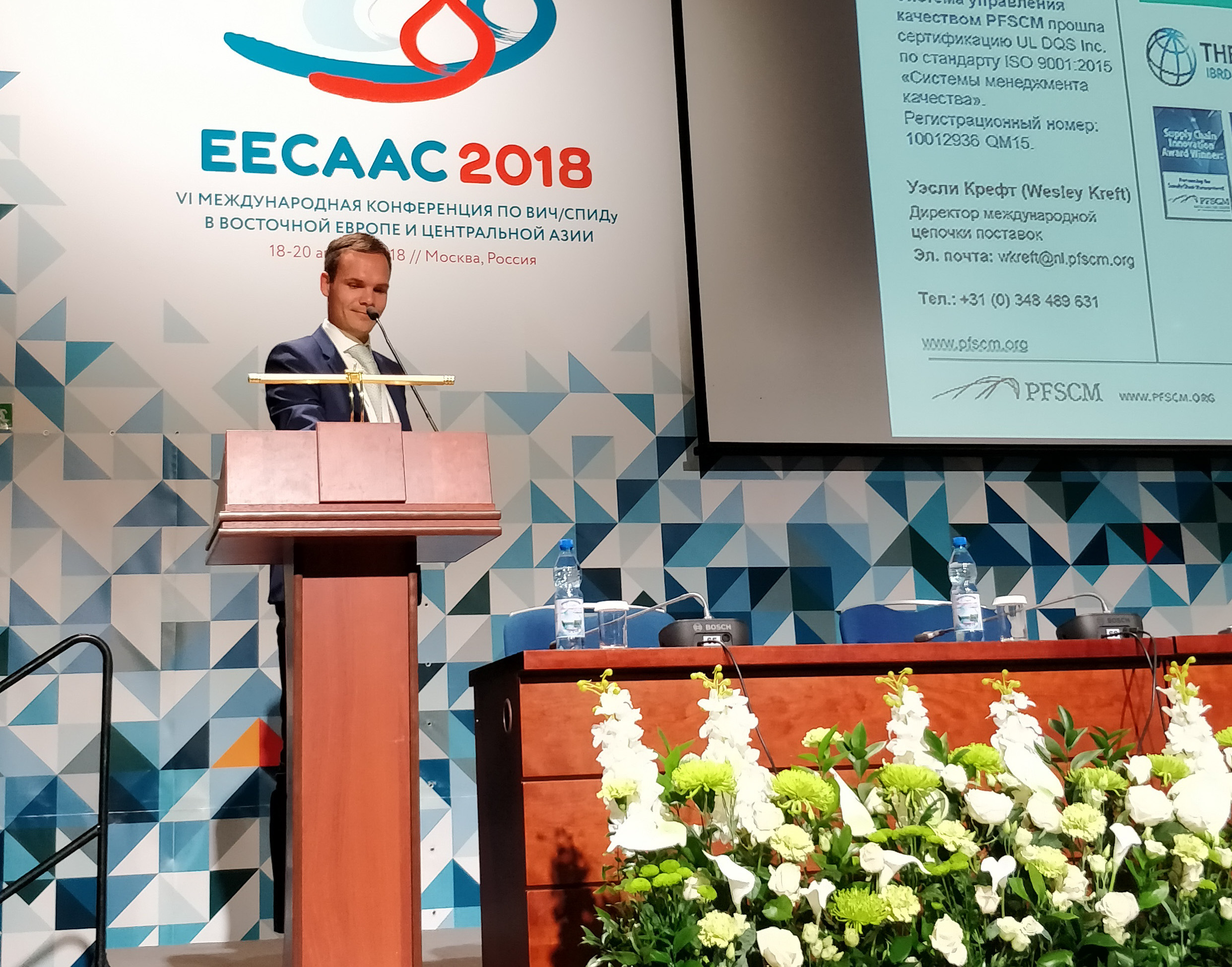The Eastern Europe and Central Asia AIDS Conference took place in Moscow, Russia, from April 18 to 20, 2018.
The concept of the conference was: “Mobilizing resources: experience, investments, innovations.”
The objective of the conference was to develop regional guidelines that contain systemic cross-sectoral approaches to solving the problem of HIV/AIDS on national, regional, and global levels. The implementation of these recommendations can facilitate the adaptation of national policies and improve the effectiveness of national HIV prevention programs, while taking into account the regional context and local specific features of the epidemic.
Further, other goals of the conference focused on the measures for eliminating HIV infection and other socially significant diseases in Eastern Europe and Central Asia, presenting high-performance programs, and exchanging experience among scientists, experts, policymakers, health care professionals, and public figures in relation to the best HIV response strategies. In line with these objectives and goals, PFSCM Global Supply Chain Director Wesley Kreft presented on international best practices in procurement of HIV commodities.
International best practices in procurement of HIV commodities
Adhering to global best practices for the procurement of HIV commodities is key to ensuring that a cost-effective and reliable supply of readily available, quality medicines is accessible to patients. The World Health Organization’s (WHO’s) guidelines and recommendations provide the backbone for best procurement, distribution, quality testing, and patient regimen practices, ensuring safe, effective, and sustainable treatment. However, the successful execution of these instructions rests with the countries, governments, and agencies managing the supply chains.
Presenting at the VI Eastern Europe and Central Asia AIDS Conference, PFSCM’s Wesley Kreft discussed four ways best procurement practices ensure funds go further for uninterrupted HIV commodity availability.
- Following the WHO’s latest guidelines and recommendations for HIV treatment.
- Using fixed-dose combinations to reduce supply chain, distribution and product cost, while minimizing expired stock.
- Pooling the product demand across countries to strengthen the negotiating power for best value HIV commodities.
- Implementing a Control Tower to provide the visibility and data needed to optimize stockholding, prevent stock-outs and negotiate better logistics contracts to integrate parallel supply chains.
To learn more, please get in touch with us

